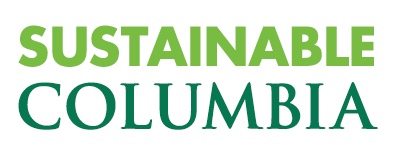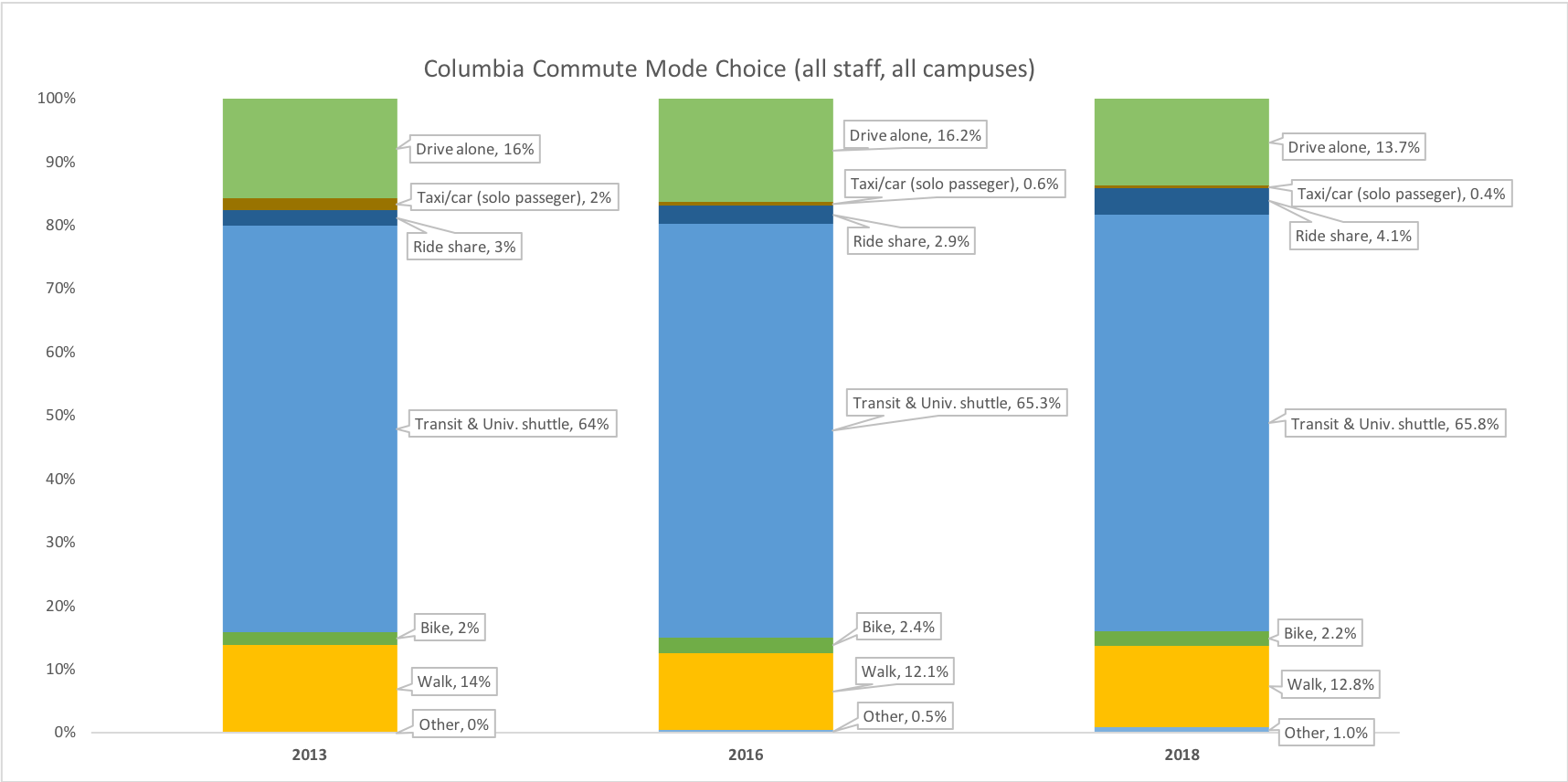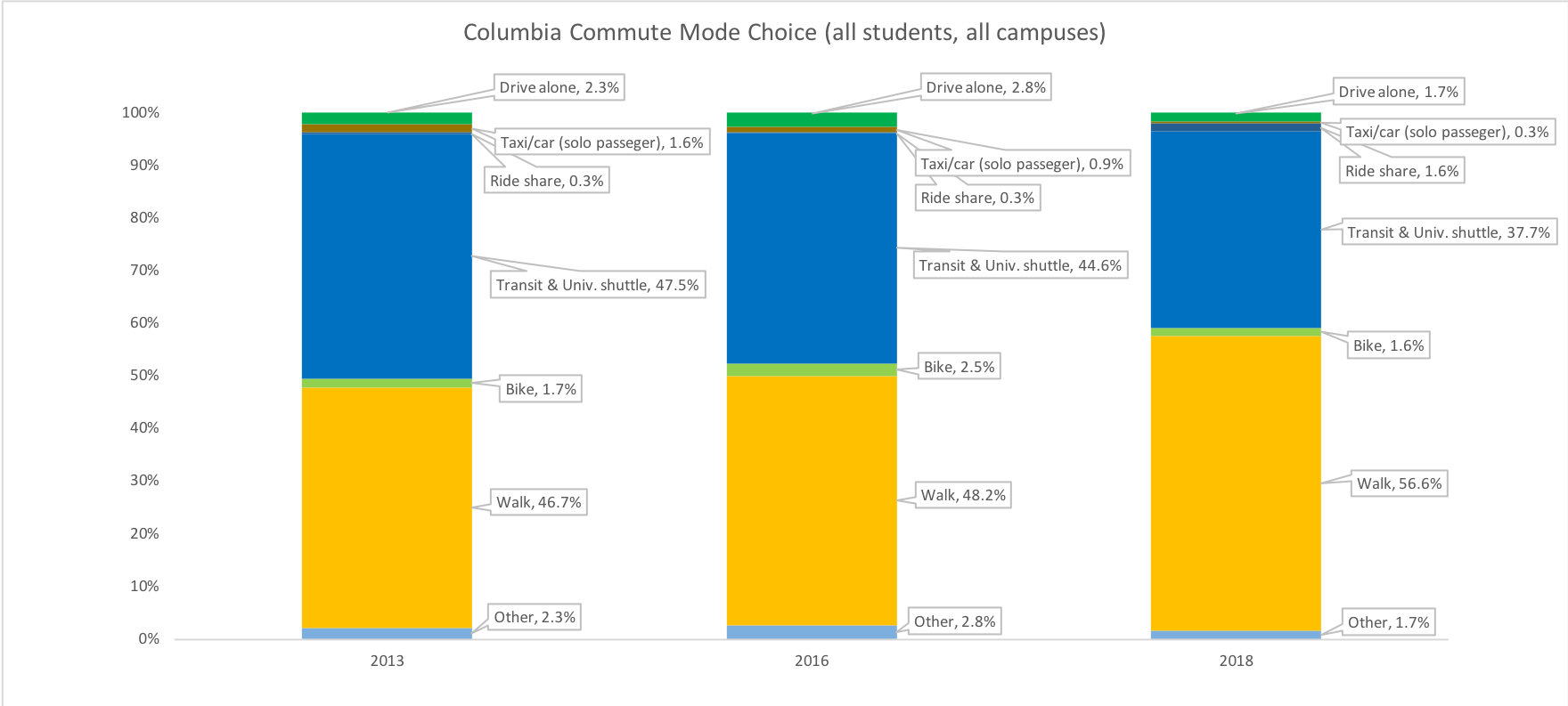Columbia’s Commute and Travel survey is sent periodically to all Columbia affiliates. The most recent survey, sent in April of this year, received 11,147 university-wide responses – 2,912 more responses than the 2016 survey – which will help Columbia track its sustainability progress, report on greenhouse gas (GHG) emissions, and improve access to alternative modes of transportation.
Survey highlights include:
- Fewer Columbia affiliates choosing a drive-alone commute: a 2.5% and 1.1% decrease for employees and students, respectively
- 8.8% increase in students choosing a walking commute
- 98.3% of students and 86.3% of employees choose a sustainable commute mode, such as carpooling, taking public transit, biking, or walking
- Overall reduction in affiliates choosing a solo taxi commute
- Increase in Columbia affiliates choosing “ride share” as their primary commute mode
- Overall increase in survey participation from 2016 to 2018
The charts below show how Columbia’s commute mode choice has changed over time.


